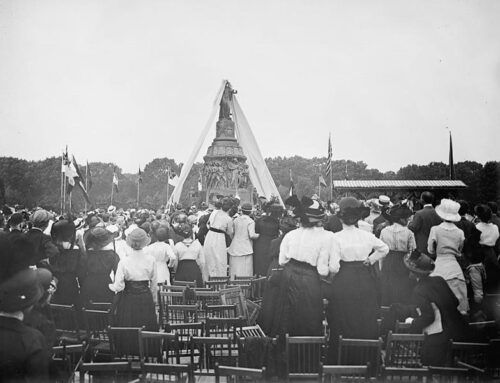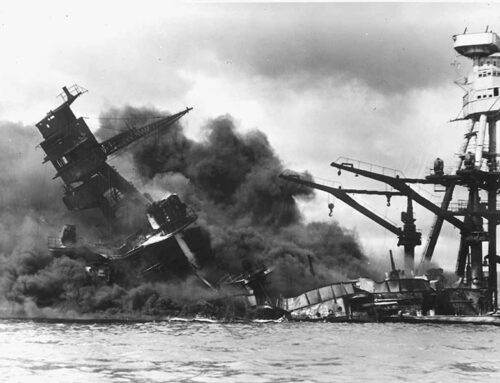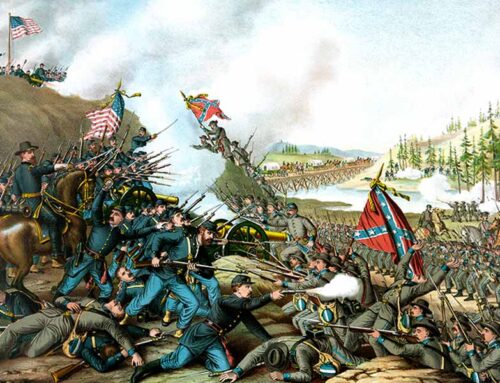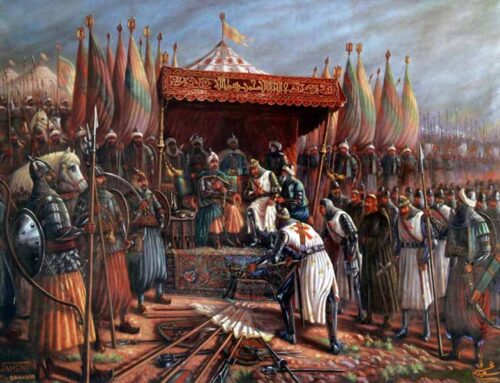“Whereas you do not know what will happen tomorrow. For what is your life? It is even a vapor that appears for a little time and then vanishes away.” —James 4:14
The “Spanish Flu” Outbreak Declared, March 11, 1918
 hen discussing the providence of God in history, one must take into account natural phenomena as well as the lives of people. Great men and intellectual or ideological movements may steer the direction of the “narrative” story of the past, but those elements of yesterday over which men have no control sometimes overwhelm all other factors. John Piper in his wonderful book entitled Providence, cites three reasons we need to look closely at the “extensiveness and detailed attentiveness of God’s providence in every part of nature.” First, because the natural world threatens to harm us more constantly than any danger from human accident, assault or war, including fatal diseases, perilous natural disasters and countless possibilities of “freak accidents.” Secondly, we need to develop a “deep and unshakable, life-stabilizing conviction about God’s providence over the natural world . . . both micro and macro rule.” Third, “if we don’t see the close attentiveness of His governance of the natural world in Scripture, we will not see His purposes in that governance. Our confidence in the purposes of His providence in nature can be total.”
hen discussing the providence of God in history, one must take into account natural phenomena as well as the lives of people. Great men and intellectual or ideological movements may steer the direction of the “narrative” story of the past, but those elements of yesterday over which men have no control sometimes overwhelm all other factors. John Piper in his wonderful book entitled Providence, cites three reasons we need to look closely at the “extensiveness and detailed attentiveness of God’s providence in every part of nature.” First, because the natural world threatens to harm us more constantly than any danger from human accident, assault or war, including fatal diseases, perilous natural disasters and countless possibilities of “freak accidents.” Secondly, we need to develop a “deep and unshakable, life-stabilizing conviction about God’s providence over the natural world . . . both micro and macro rule.” Third, “if we don’t see the close attentiveness of His governance of the natural world in Scripture, we will not see His purposes in that governance. Our confidence in the purposes of His providence in nature can be total.”
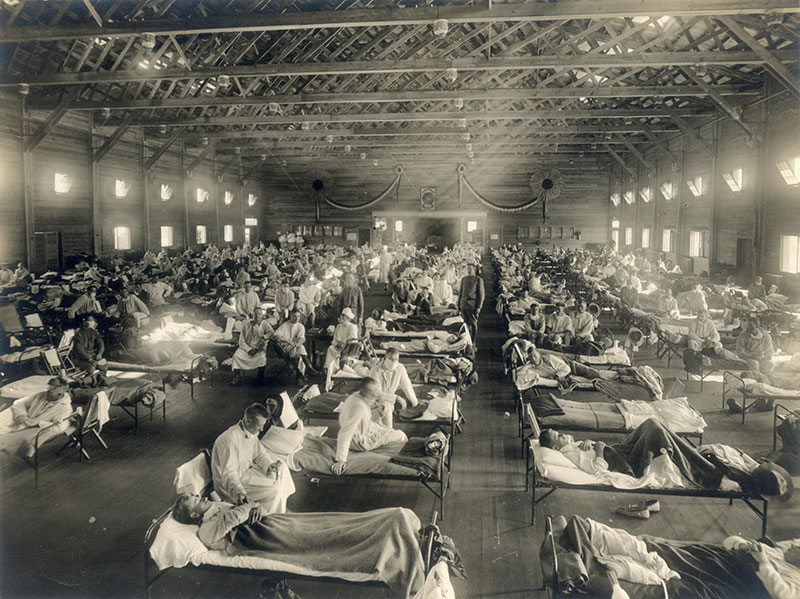
Emergency hospital during influenza epidemic, Camp Funston, Kansas, 1918
On March 4, 1918, the first recorded case of the “Spanish flu” appeared in the United States army Camp Funston, Kansas. By the 11th, the medical director recorded the flu as an outbreak when hundreds of troops fell ill with sore throats, fevers, and headaches. From there it spread across the United States and Europe and then to the whole world. Before the pandemic had run its course over the next two years, about five hundred million people had contracted the disease and 50-100 million had died from the sickness, worldwide. Approximately seventeen million people died in the First World War in the previous four years. The first wave of the sickness prostrated several million soldiers in the war but was mild compared to the second wave, which began in August, and quickly became “the greatest tidal wave of death since the black death, perhaps in the whole of human history” (Spinney, p. 4*) yet has largely been forgotten in the shadow of the Great War. The influenza outbreak has become just a footnote of the era. Since the flu pandemic began during the war, and Great Britain, France, and America controlled all press and information, especially something that might have a deleterious effect on the war propaganda, they chose to name the disease after a neutral nation that had no censorship: Spain.
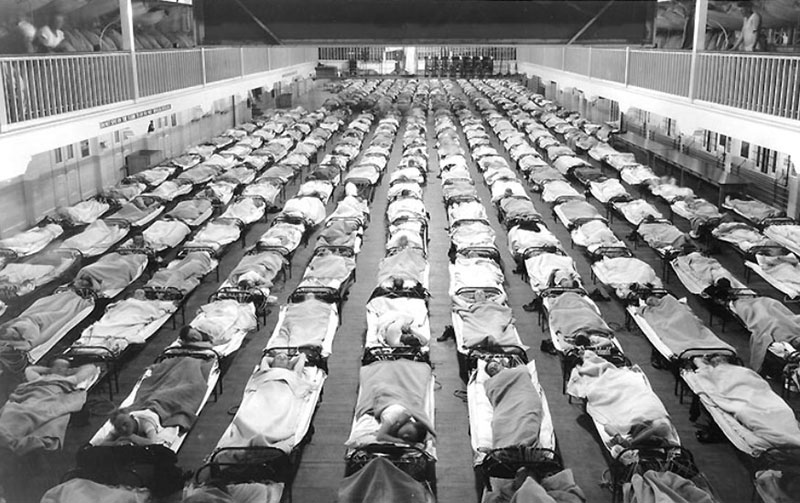
Rows of sick soldiers at a Naval Training Station in San Francisco, 1918
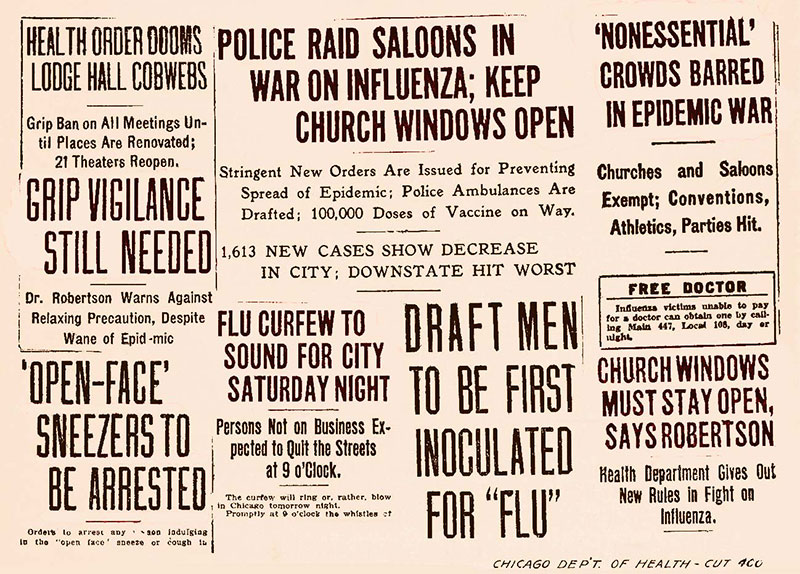
A collage of sensational headlines in Chicago during the influenza pandemic of 1918
The historical origins of influenza and other so-called “crowd diseases” are murky at best. It wasn’t even called influenza in English until the Italian word for “Influence”—influenza di catarro meaning to flow into; thought to be caused by stars—caught on in relation to an outbreak of an epidemic in 18th century England. Pandemic flu associated with fever and acute viral infection of the respiratory tract seems to have occurred periodically in the western world prior to the 20th century, perhaps for thousands of years. Certainly conquistadors, explorers, and fishermen unwittingly brought diseases such as smallpox and influenza to the New World in the 16th and 17th centuries, the viruses sometimes playing a key role in the conquest of places like Mexico, Peru, North America and the Caribbean, by killing off virgin populations of native tribes who had no natural resistance or immunity. Europeans often considered such die-offs as providential events and opportunities. Christians often saw death-causing diseases as one of God’s means of judgement on themselves or others.
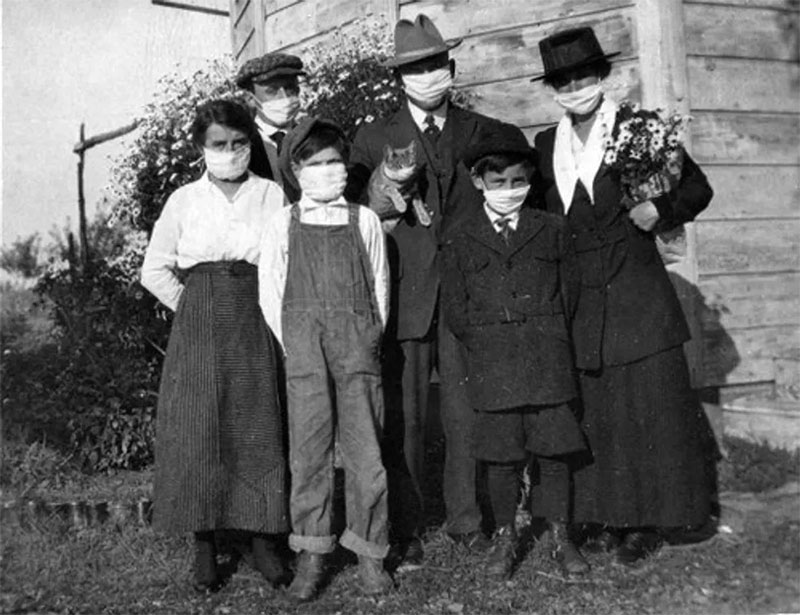
A fully masked family—cat included—in 1918
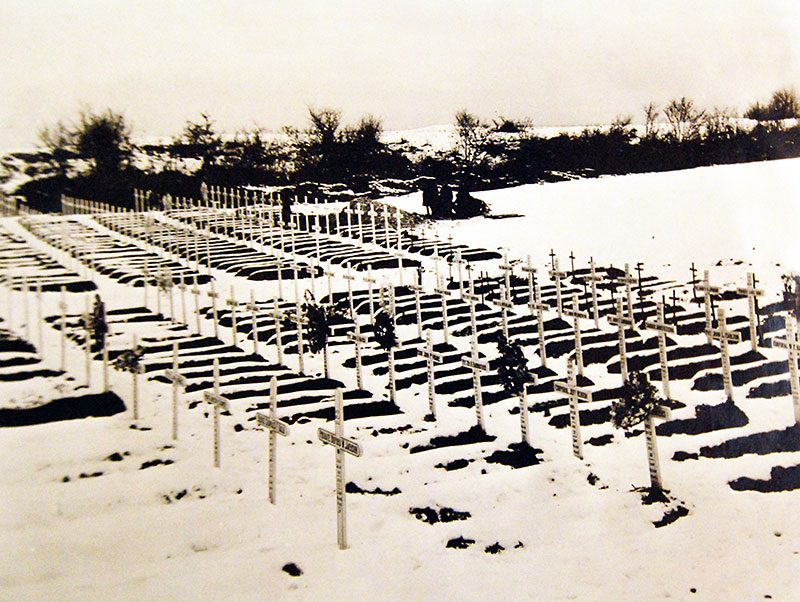
U.S. Military Cemetery, Camp Du Valdahon, Doubs, France, 1919—many of the graves are of those who succumbed not to war, but influenza
Wars often brought epidemics in their wake, especially in the 18th and 19th centuries, when more men died of disease than in battle, in every war. Two viral flu pandemics struck in the 19th century, in 1830 (Europe) and 1889 (Russia). Many cases developed into pneumonia and killed off people of every age demographic. With the discovery of the germ theory of disease and other advances, the medical profession and people in general anticipated the possible elimination of diseases early in the 20th century. The knowledge of the existence of viruses, unseen and unseeable, remained hidden in dark corners of medical science. In 1914, “despite the inroads made by germ theory, human populations were far less healthy than they are now . . . the main cause of ill-health was still overwhelmingly infectious diseases.” (Spinney, p.30) Life expectancy in Europe and America was around fifty and in India and Persia, about 30 years, so “middle-aged” had a different meaning a hundred years ago. Generalized medical training had just begun and health insurance was virtually unheard of. In 1918 the flu arrived. It might as well have been the 1400s.

A sign in a Navy Yard in 1918 warns against the dangers of spitting as a cause for the spread of influenza
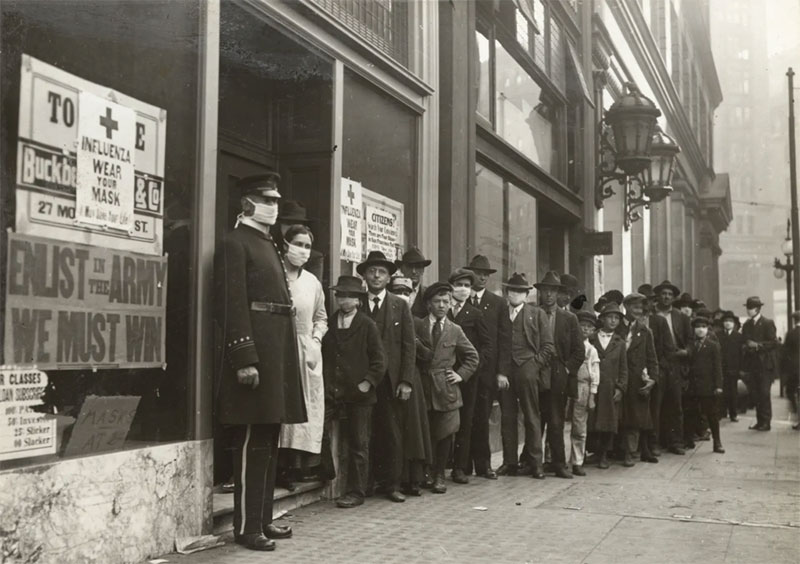
People wait in line to buy masks in 1918 San Francisco
That great influenza tidal wave of August, 1918—the second and more virulent return of the flu—morphed into a more sinister disease, bringing with it a secondary “bacterial pneumonia,” which worked quickly to swell the lungs, turn face and hands dark purple, and drown the victim in his own blood. It spread through the air from coughing—teeth fell out, hair fell out, bleeding and delirium were common. Some people never got around to the multitude of possible effects and just dropped dead on the spot. It seemed to hit younger people and pregnant women extremely hard. Every possible mitigating strategy was attempted: masks, quarantine, vaccines, disinfections, closing ports, schools, churches, and public gatherings. About 90% of those who were infected by that H1N1 flu virus experienced the normal course of yearly flu, but no desperate measures seemed able to save those 10% who suffered terribly and died.
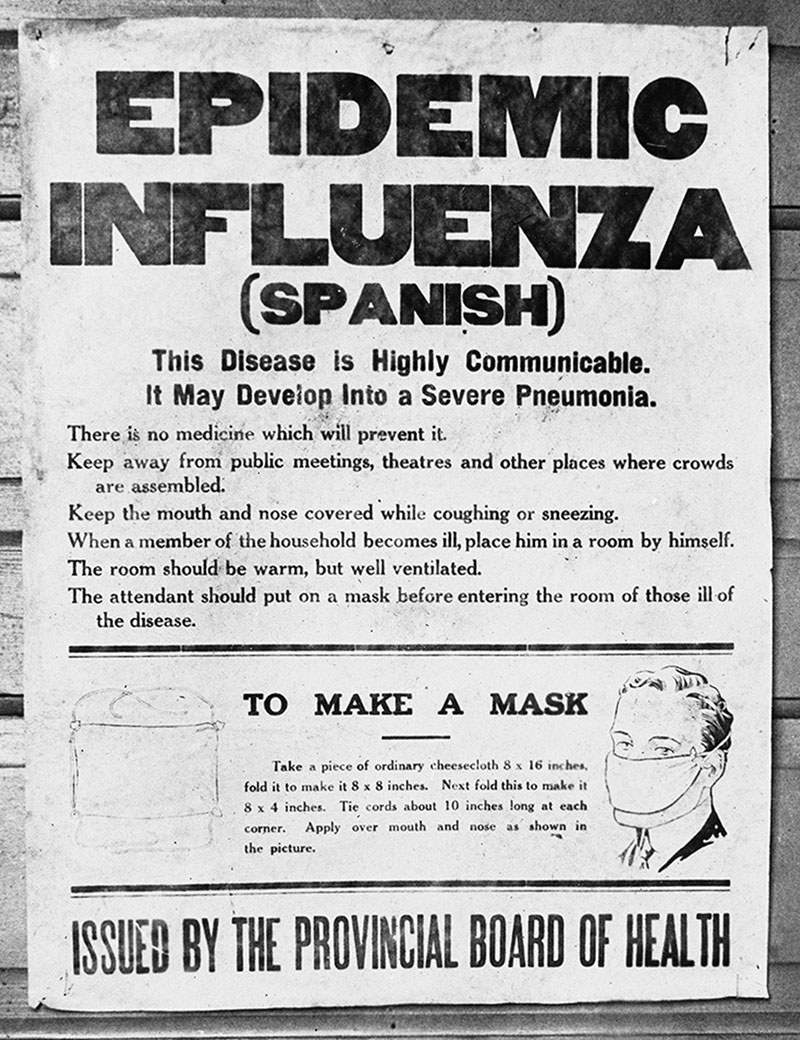
A poster issued by Alberta, Canada’s Provincial Board of Health alerting the public to the 1918 influenza epidemic, including instructions on how to make a mask
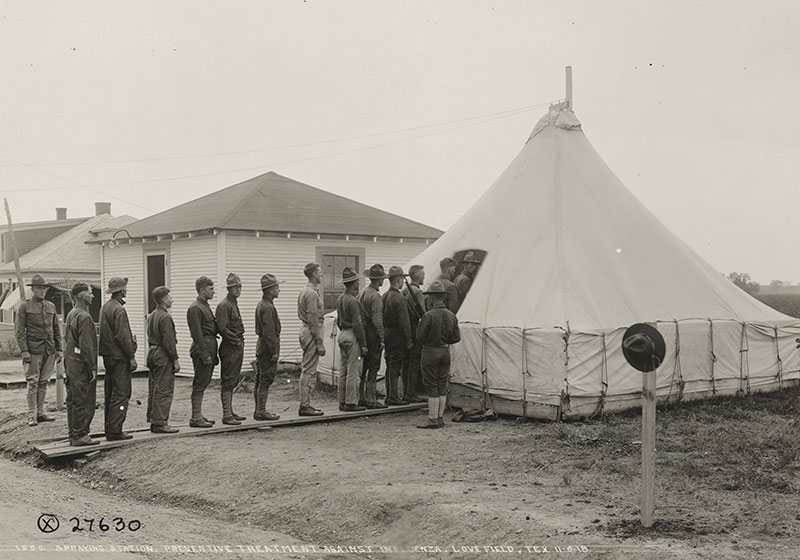
Soldiers wait in line for a “preventative spray” booth at Love Field in Texas, 1918
The influenza pandemic in areas hardest hit changed the course of history, and whole sections of cemeteries with 1918 or 1919 death dates on the markers attest to the inability of “medical science,” homeopathic nostrums, or government control of people’s lives, to stem the mortal tide of the disease. Providentially, most people survived it, but just as providentially, multiple millions were cut off in a short time, ready or not to meet their Maker.
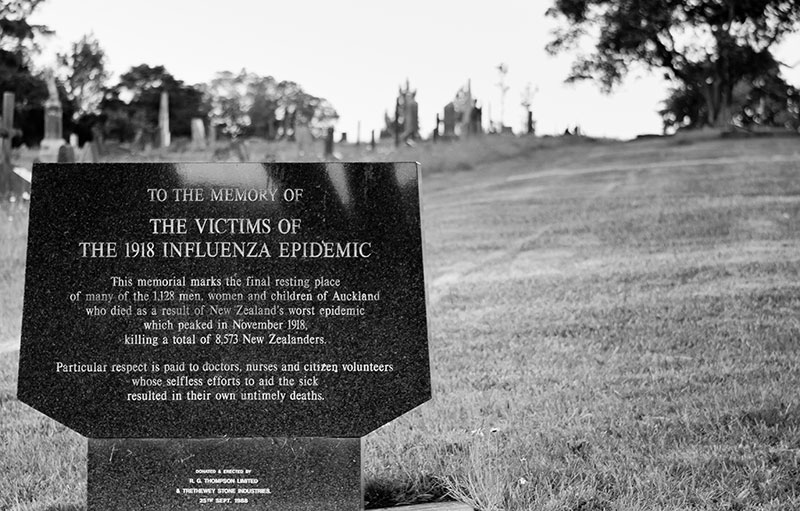
A memorial to the 1,128 men, women and children of Auckland, New Zealand who fell to the influenza pandemic of 1918-1920, out of the total 8,573 New Zealanders who succumbed
*Pale Rider: The Spanish Flu of 1918 and How it Changed the World by Laura Spinney (New York, 2017).

- For further study of the doctrine, purposes, and confidence in God’s personal control of all history, I recommend John Piper’s study entitled Providence (Crossway, 2020).
Image Credits: 1 Camp Funston, KS (wikipedia.org) 2 San Francisco Navy Training Station Hospital (wikipedia.org) 3 Chicago Headlines (wikipedia.org) 4 Masked family (wikipedia.org) 5 Cemetery in France (wikipedia.org) 6 “No Spitting” (wikipedia.org) 7 Waiting in line (wikipedia.org) 8 Alberta Poster (wikipedia.org) 9 Spraying Station (wikipedia.org) 10 Auckland, New Zealand Memorial (wikipedia.org)



